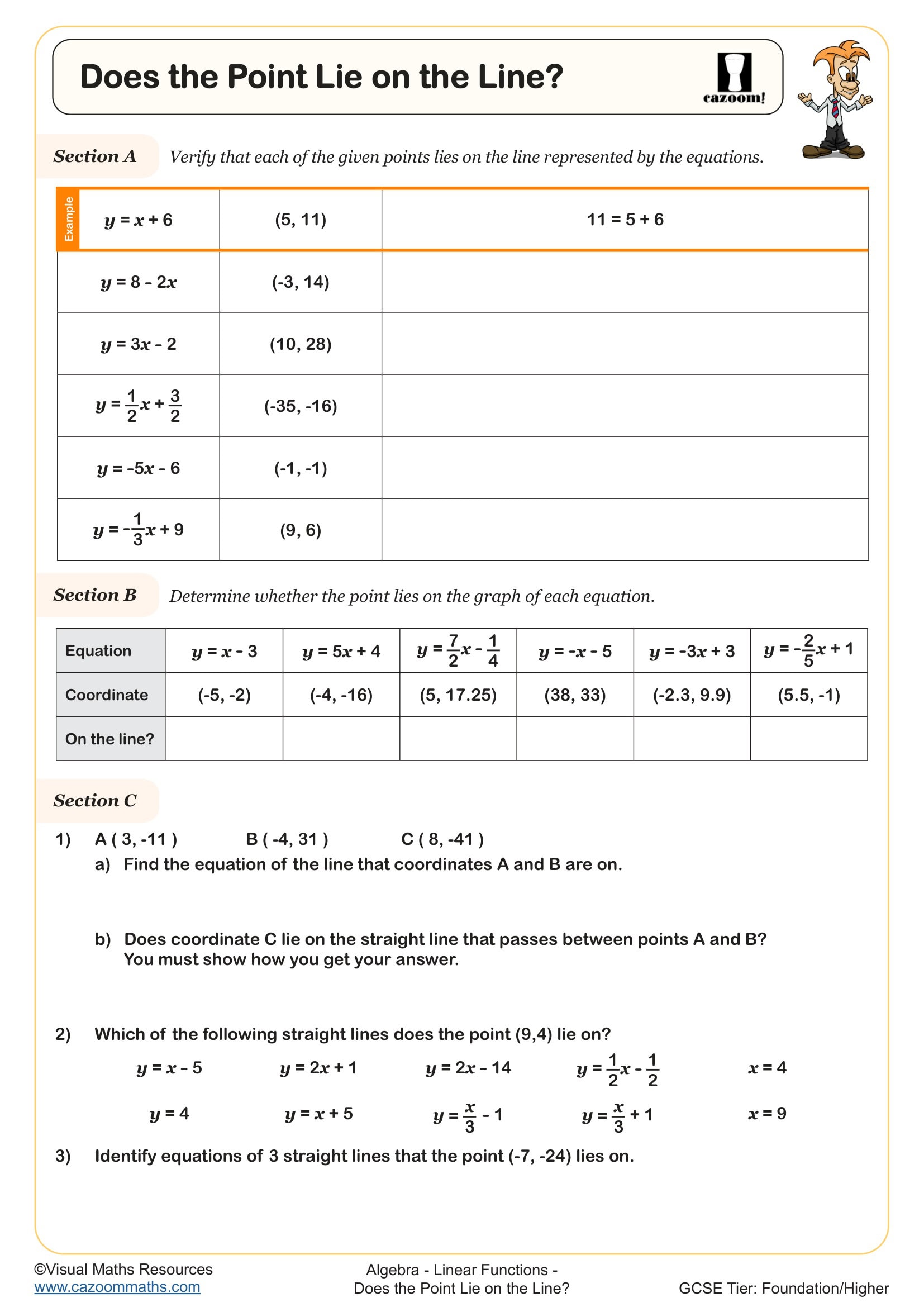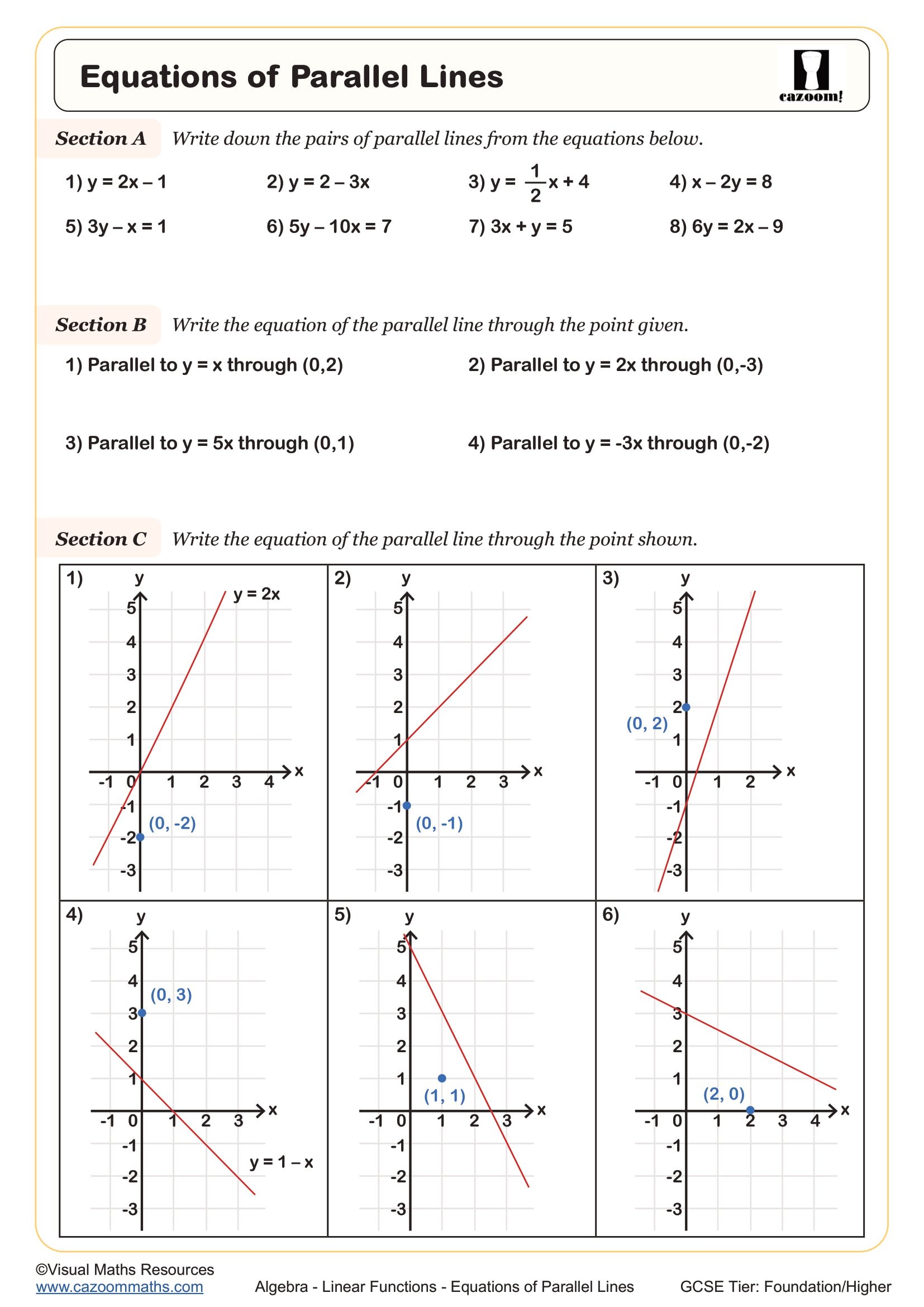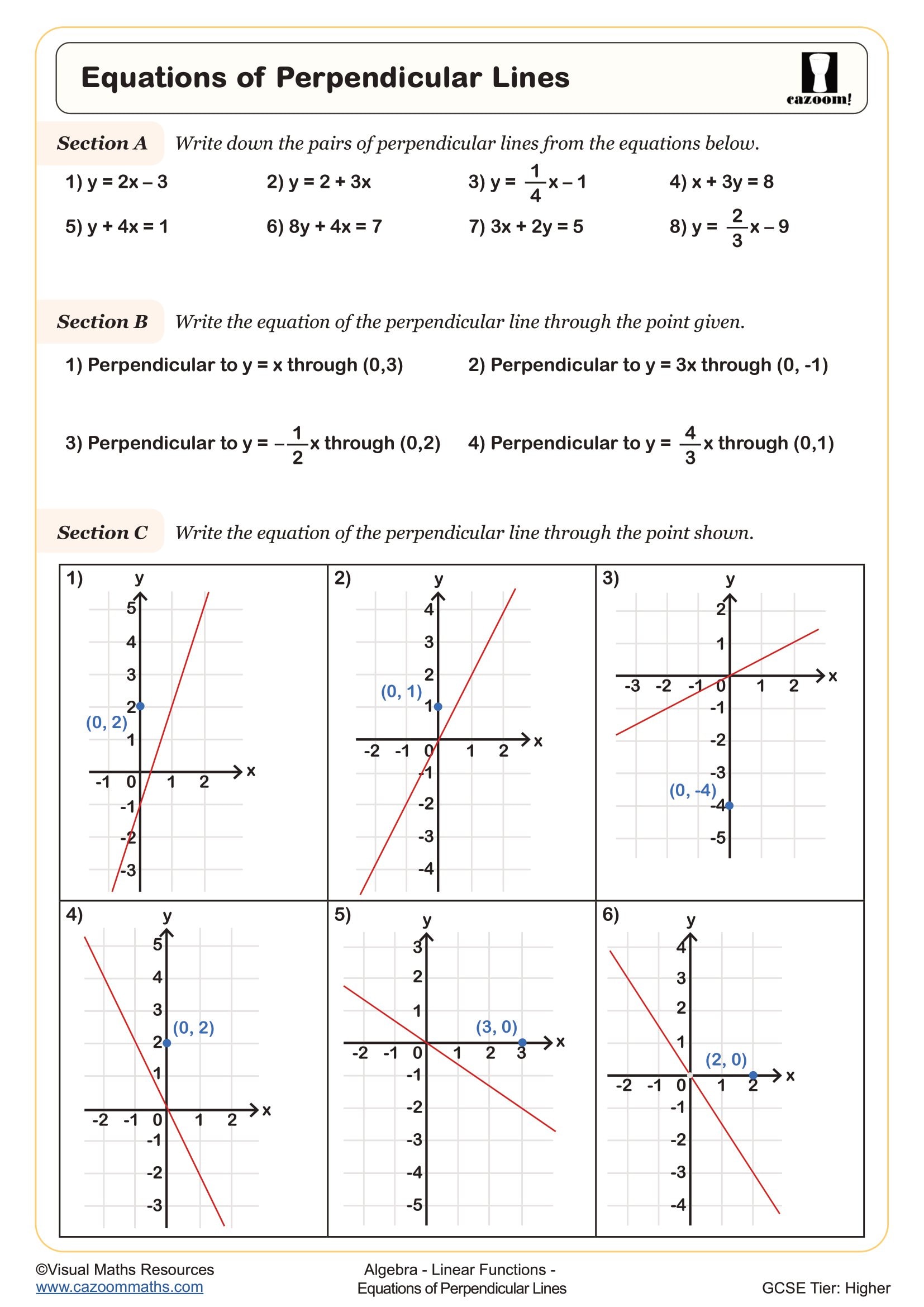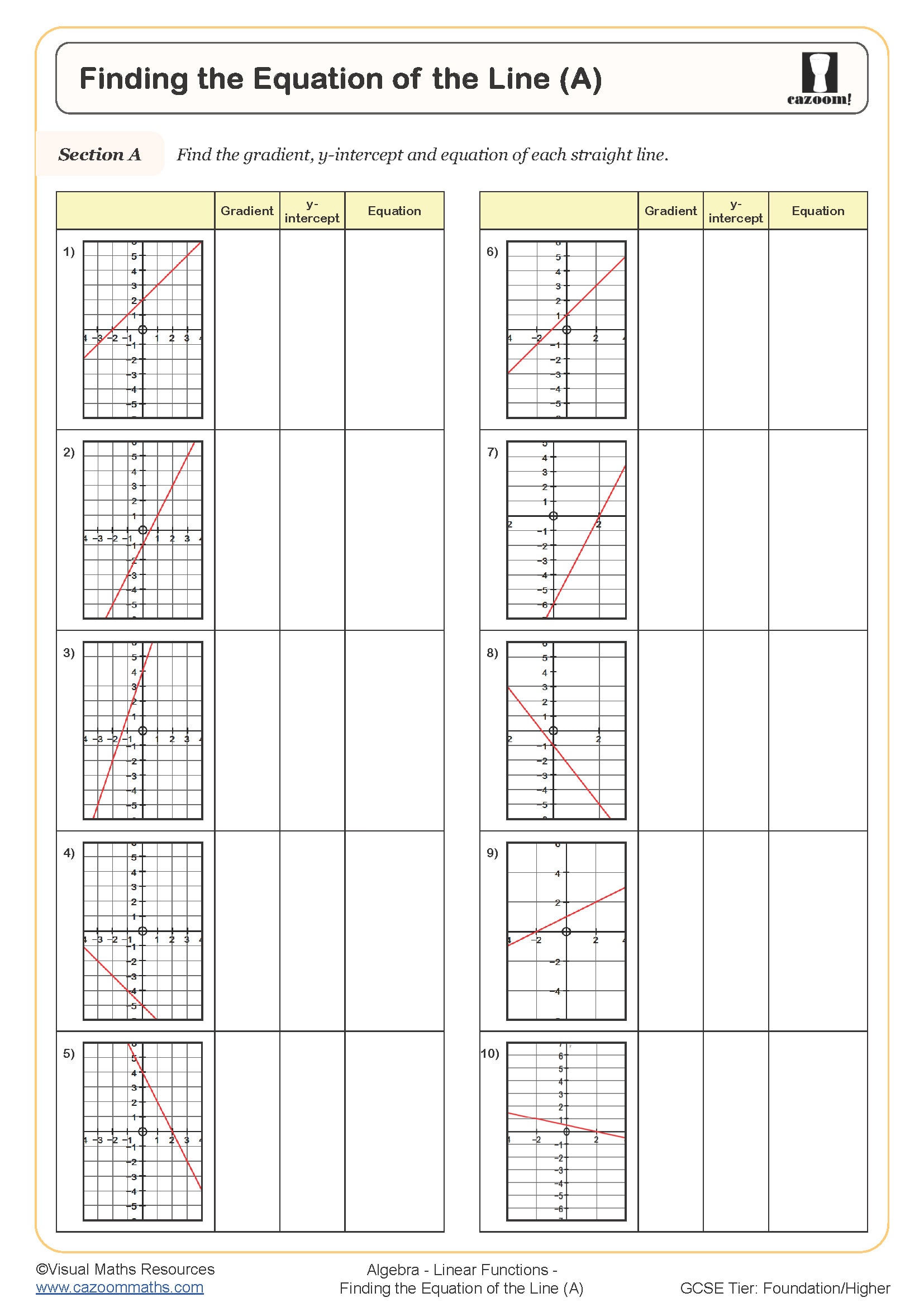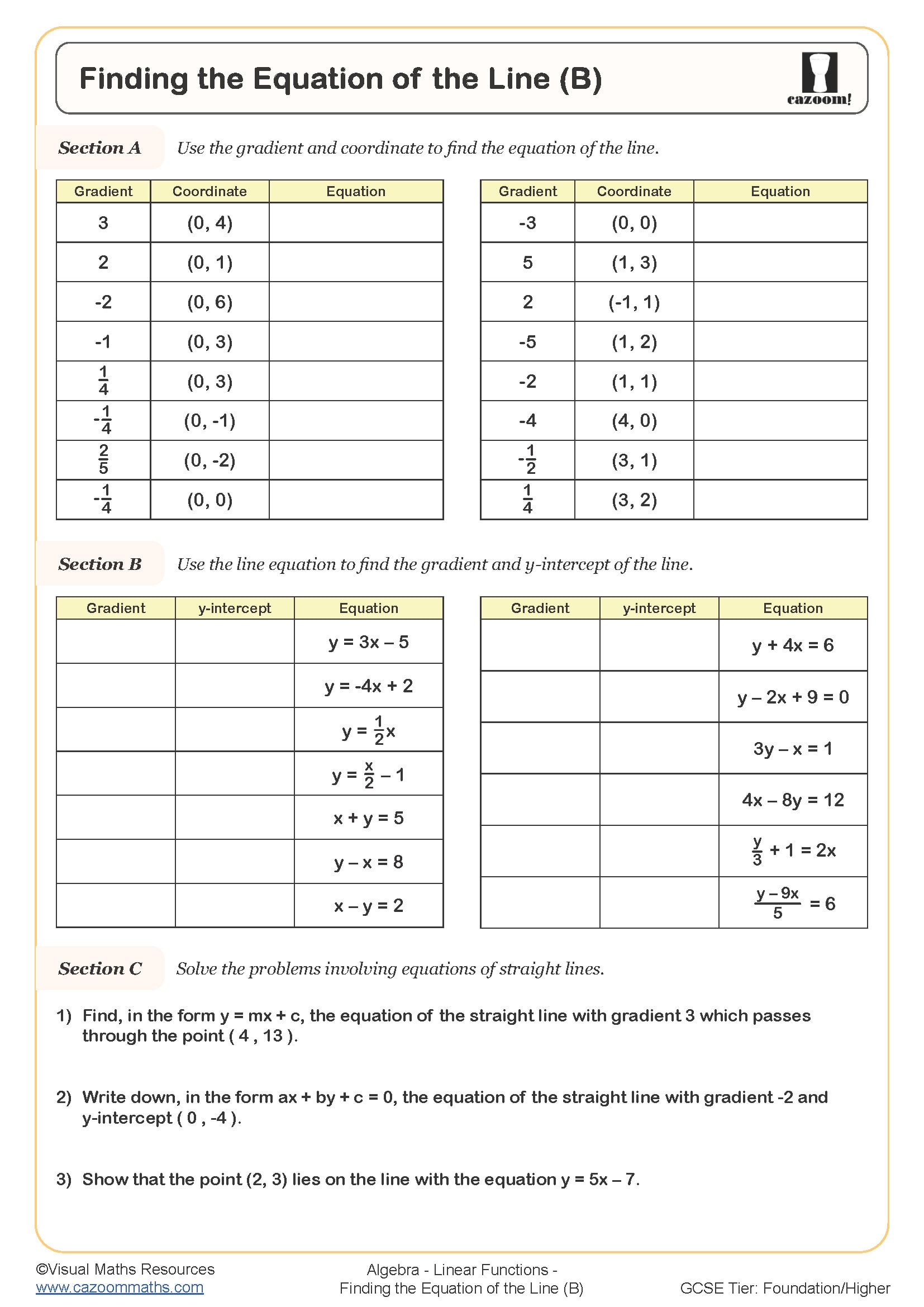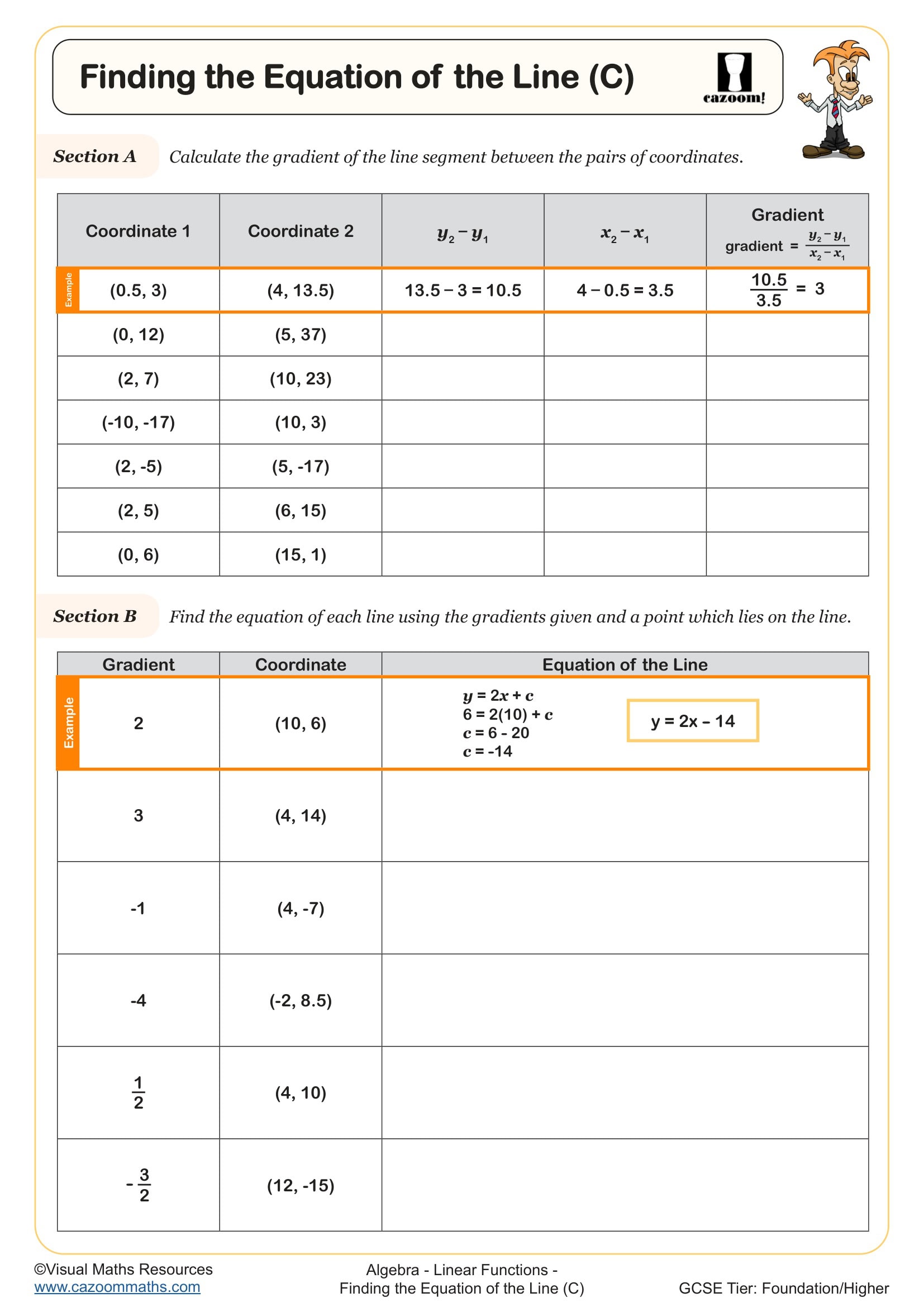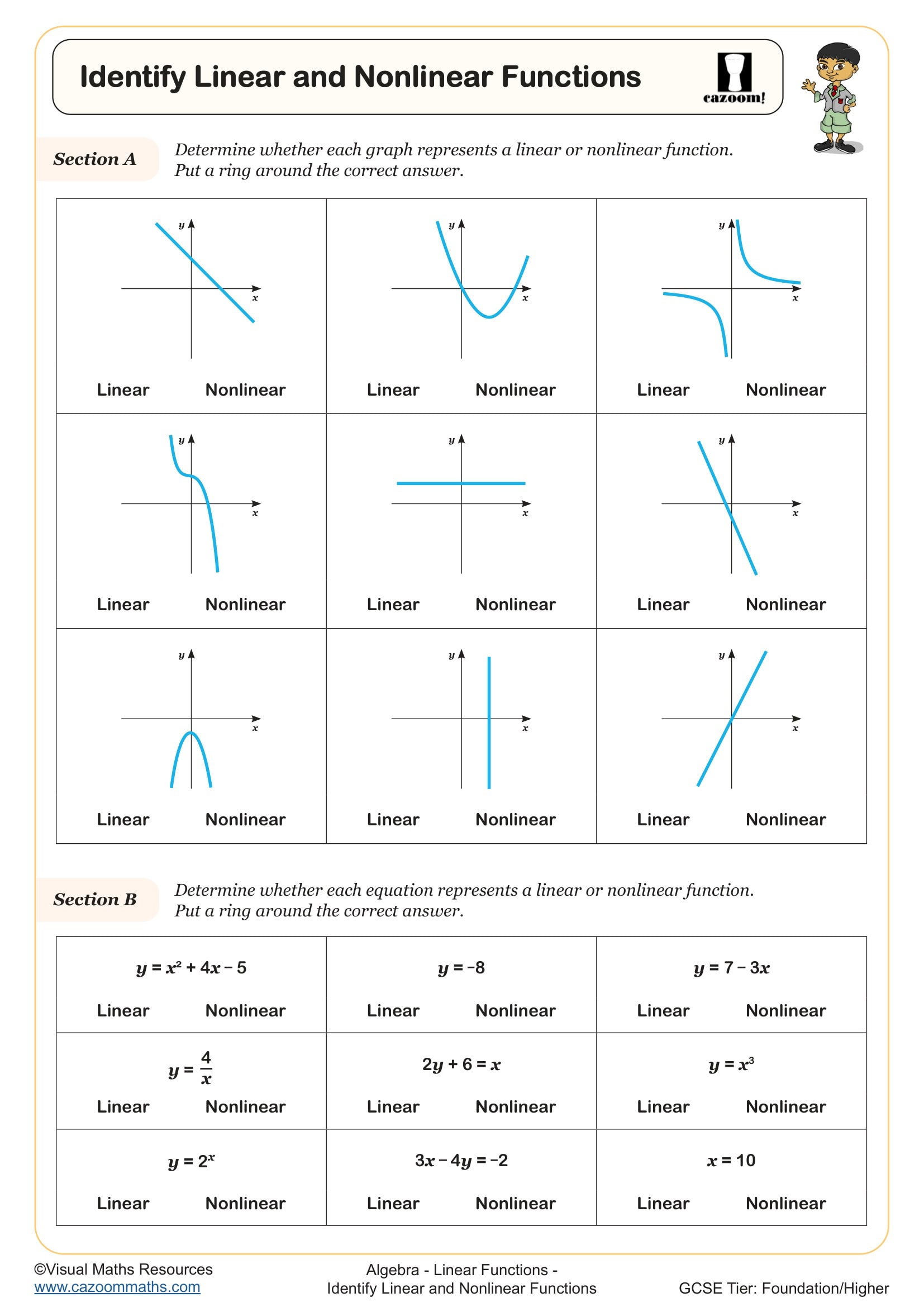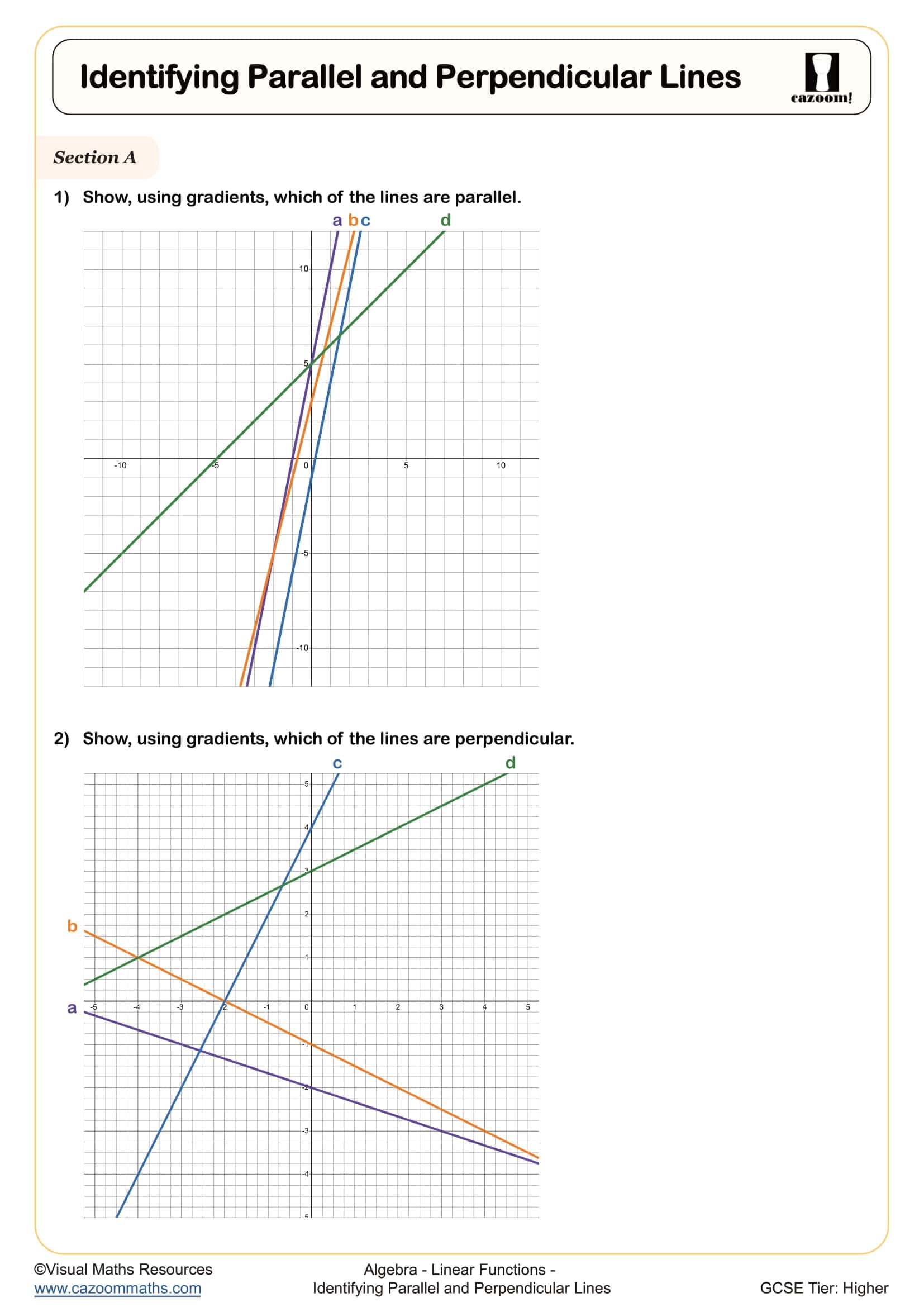Year 11 Linear Functions Worksheets
Complete Year 11 Linear Functions Worksheet Collection with Step-by-Step Solutions
Finding quality linear functions worksheet resources that actually help students grasp these concepts isn't easy. We've created these materials specifically for UK Year 11 students, covering everything from basic graph linear equation work to advanced function manipulation. Each linear functions worksheet PDF comes with detailed solutions that show the complete thinking process, not just final answers.
Essential Skills Covered in These Linear Functions Worksheets
We've packed quite a lot into these Year 11 maths worksheets with answers! The progression moves from plotting basic linear graphs to understanding gradients, y-intercepts, and function notation. Students particularly enjoy the real-world problem scenarios (they make the maths feel less abstract). Each linear functions worksheet algebra section builds systematically, ensuring nobody gets left behind during lessons.
Why Year 11 Students Need Targeted Linear Functions Practice
Here's what we've noticed: students who struggle with linear functions usually haven't had enough quality practice with graphing linear equation problems. Regular worksheet practice directly improves GCSE performance because students develop pattern recognition and problem-solving fluency. The confidence boost is remarkable when they finally "get" how linear functions actually work.
Key benefits students experience:
• Improved accuracy in plotting and reading linear graphs
• Better understanding of gradient and y-intercept relationships
• Increased confidence with function notation and terminology
• Enhanced problem-solving skills for GCSE exam questions
• Stronger foundation for A-Level mathematics progression
Real-World Applications Where Students Use Linear Functions Skills
Students always ask, "When will I ever use this?" Here's the satisfying answer: Linear functions appear everywhere in science, economics, and engineering. They're fundamental for understanding rates of change, predicting trends, and analysing data relationships. It's actually quite rewarding when students recognise these patterns in their other subjects and make those cross-curricular connections.
Practical applications that students discover:
• Physics - calculating speed, acceleration, and motion graphs
• Geography - analysing population growth and climate data trends
• Business Studies - understanding profit/loss and break-even analysis
• Science - interpreting experimental data and drawing conclusions
• Economics - modelling supply and demand relationships
• Engineering - designing structures and calculating material requirements
